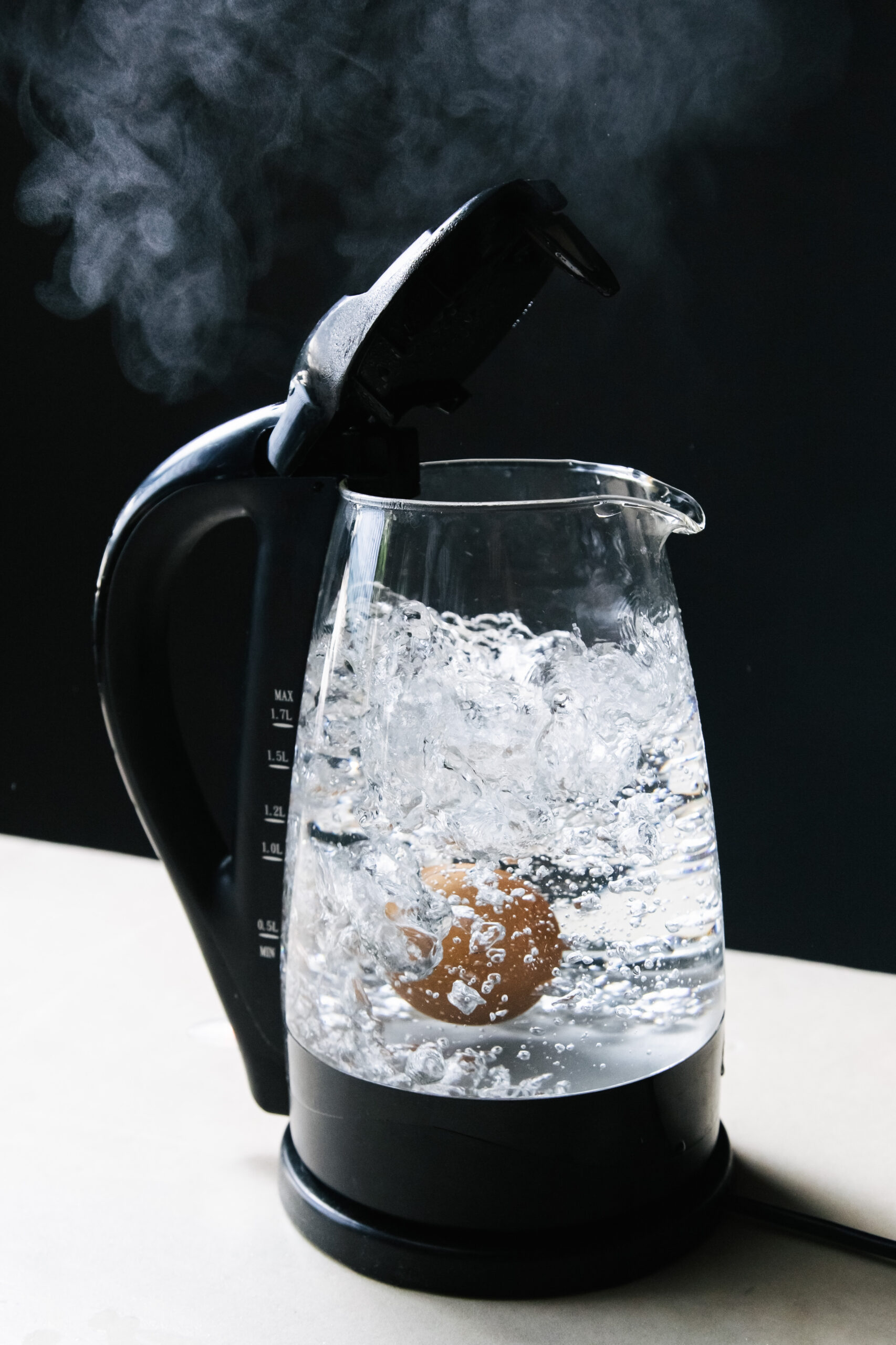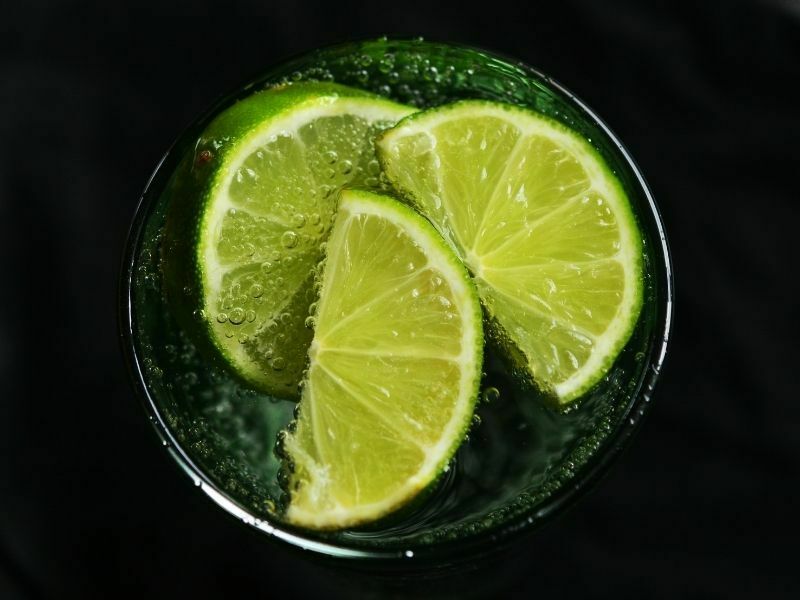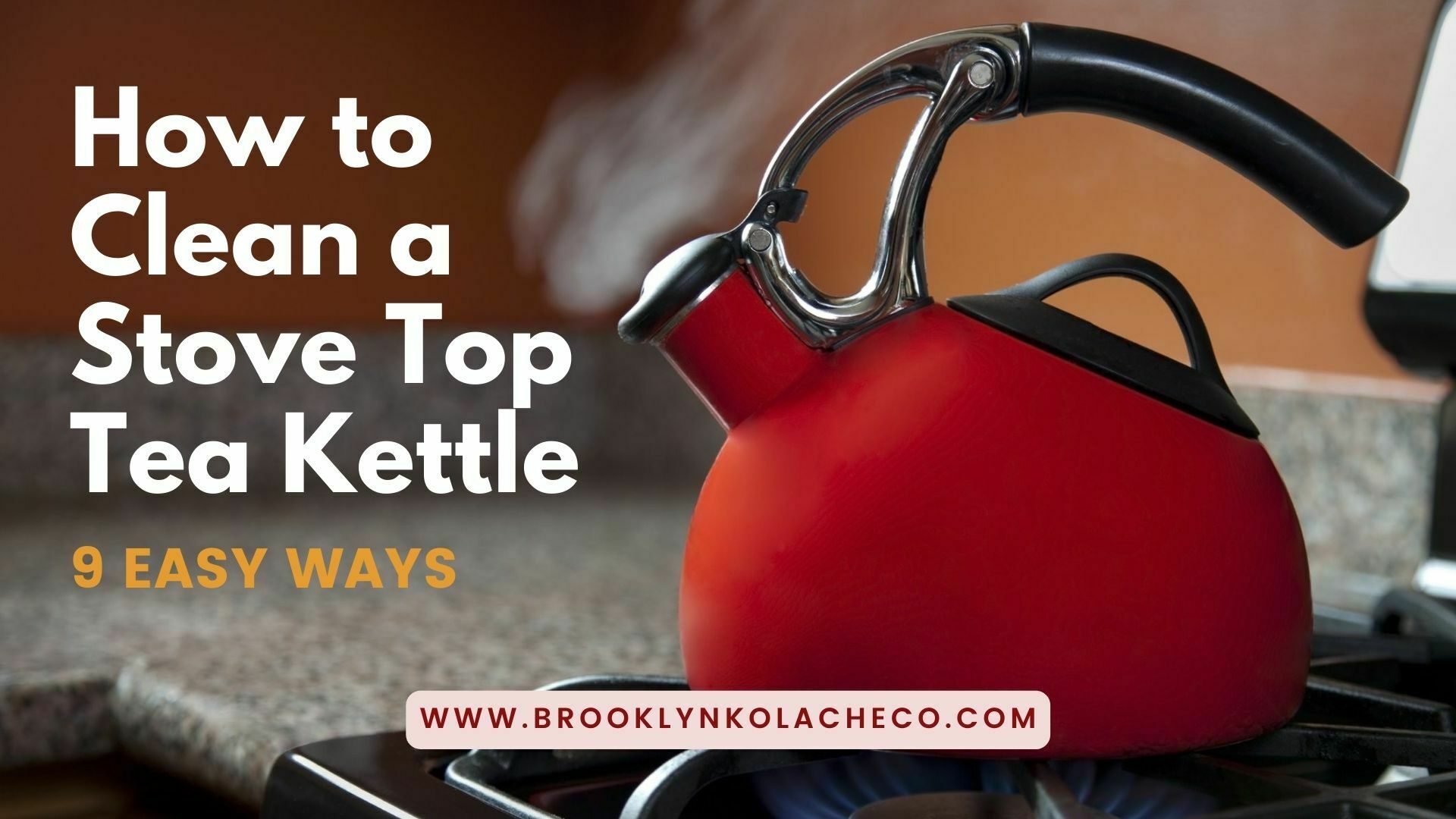A stove top tea kettle can be used in making tea and water boiling at home. It is made of stainless steel and aluminum material. After using it for several times, the stains start building up on the sides of the kettle. The stove top tea kettles are difficult to clean as compared to electric kettles. There are 9 ways of cleaning the stove top tea kettle. These methods will help you remove stains from your cooker as well as keep it’s shine for a longer period of time.
What is A Tea Kettle
A tea kettle, sometimes called a teapot or samovar, is a device used to boil water to make tea. The kettle itself is usually made of metal but other materials may be used including ceramic and glass. It’s recommended that you use a tea kettle that is made of stainless steel or copper as they are rust resistant and durable.

There are several types and styles of tea kettles. The most common is the standard kettle with a separate base and heating element. These are made from many materials such as aluminum, stainless steel and copper. The newer model electric kettles often have a detachable base for cordless pouring and portability. This style of kettle usually has an automatic shut off feature that turns it off when the water comes to a boil. A whistling kettle signals the user that the water has boiled by emitting a whistle from a small steam spout located on the lid of the kettle.
How Does it Work?
The tea kettle is a staple in most kitchens. It’s used to heat water for tea, oatmeal, hot cocoa, and other hot drinks. But it’s also used to simply boil water. Boiling water is faster than heating it up on the stovetop or in the microwave. It’s also a great way to purify water when you’re camping or traveling.
When we think of kettles, we usually think of stovetop kettles made of metal, but there are electric kettles as well. An electric kettle functions similarly to a stovetop kettle, but it boils water faster than a kettle on the stove.
A tea kettle is a container that holds liquid and applies heat to bring the liquid to its boiling point. When the water reaches its boiling point, which is 212°F (100°C) at sea level, it turns into steam and rises from the container as bubbles form on the bottom of the kettle and rise through the liquid.
4 Main types of kettles
1. Electric kettles
Electric kettles are by far the most popular type of kettle for brewing tea and coffee at home because they are so easy to use. Electric kettles have a heating element inside that heats up water when plugged into an outlet. They usually come with a removable lid so that you can pour hot water from them easily – this makes them perfect for making tea or coffee at home!
2. Stovetop kettles
Stovetop kettles are designed to rest on top of your stove, where they draw heat from the burner. There are two main styles of tea kettles: those with an open spout and those with a whistling spout. The whistling variety has an additional feature: a small mechanism that uses the pressure of steam to make a loud noise when the water inside gets hot enough.
3. Stainless Steel Tea Kettle
Stainless steel is probably the most common material used in the construction of tea kettles. This is due to its ability to resist corrosion and its shiny reflective exterior which adds an aesthetic appeal to the appliance.
4. Enamel Tea Kettle
These types of kettles are less common than stainless steel kettles, but they do have their advantages. Enamel has a smooth interior which makes it difficult for bacteria and mold to grow inside. However, enamel kettles do have a tendency to chip and crack over time which makes them more prone to rusting than stainless steel kettles.
How to Clean a Stove Top Tea Kettle
If you are one of those who often forget to clean your tea kettle, this article is for you. Here we will discuss how to properly clean a stovetop tea kettle with ease and effectiveness.
Follow these simple steps to keep your kettle looking great:
- Heat the kettle while it is empty.
- Remove the kettle from heat source.
- After it has cooled off, remove any loose particles of the crusty calcium deposits by gently rubbing them with a soft cloth or sponge.
- Using just a little bit of white vinegar, soak the cloth or sponge and then rub it on the kettle. The vinegar will be absorbed into the metal and dissolve the rest of the deposits that could not be removed otherwise.
- Let the vinegar sit for about 15 minutes, allowing all of the crusty deposits to be dissolved.
- Rinse out your kettle, filling it with water and then emptying it. Do this several times so there is no trace of vinegar or any other substance left in your tea kettle.
- Make sure to wipe down your tea kettle on a regular basis to help prevent future buildup of hard water stains and minerals. This will also keep your tea tasting fresh.
9 Best Ways to Clean a Stove Top Tea Kettle
If you are a tea or coffee lover, you know how important it is to have a clean tea kettle. If your tea kettle isn’t cleaned regularly, a scum can form in the bottom of it and make your next cup of tea taste strange. Luckily, cleaning a stove top tea kettle with natural ingredients is fairly easy.
Here are 9 ways to clean a stove top tea kettle:
1. Baking Soda and Water
For a more natural choice, use baking soda to clean your tea kettle. Pour 1/4 cup baking soda into the teapot. Fill with hot water, swirl it around so it dissolves and let sit for 30 minutes. Pour out the solution, rinse well and repeat if there is still buildup in the kettle after using this method once. If there is heavy buildup, increase your baking soda to 1/2 cup for each quart of water you use in this method.
2. Lemon Juice

Lemon juice is another acidic ingredient that can do wonders in cleaning your stove top tea kettle. Fill the tea kettle with water and add 1 cup of lemon juice. Bring the water to a boil, then turn off the heat and let the kettle sit for about 30 minutes, or until it cools off enough for you to handle it. Rinse well with hot water.
3. Dish Soap
Pour 1/4 cup of dish soap into the stove top tea kettle and fill with water until the kettle is almost full. Bring the water in the kettle to a rolling boil and let simmer for five minutes. Turn off the heat and allow it to cool completely before pouring out the soapy water. Rinse out the inside of the stove top tea kettle thoroughly with clear water and dry with a clean cloth
4. Milk
Milk is a good option for cleaning your tea kettle, so quick and easy way. Especially if it is stained with mineral deposits. Simply pour 1 cup of milk into the kettle and bring it to a boil. Allow it to cool, then scrub it clean with a soft cloth.
5. Dryer Sheets
The easiest way to clean the inside of your steel or glass tea kettle is by using dryer sheets. Simply rinse out the inside of the kettle and then place two dryer sheets in it. Fill the kettle with water and bring it to a boil on the stove. Once it has boiled for about five minutes, remove it from heat and let it cool. When the water has cooled off, dump out the water and use a scrubber to wipe away any of the remaining residue in the kettle.
6. White Rice
Rinse out your tea kettle with warm water. Remove any loose deposits inside. Add 2 cups of rice to the kettle along with 3 cups of warm water, 1 cup of vinegar (or lemon juice) and 1 tablespoon of salt. Boil for about 10 minutes then turn off heat source and let mixture sit for another 30 minutes to an hour (no more than one hour). Rinse off with warm water and wipe dry.
7. Denture Tablets
One of the best ways to clean your tea kettle is with denture tablets. Fill it with water, then add 1 or 2 denture tablets (depending on the size of your kettle).
Leave it to sit overnight before draining the water and rinsing it out in the morning.
8. Toothpaste
Dab some toothpaste on a cloth and rub it into the stains on your kettle. Let it sit for several minutes, then wash the pot with soap and water.
9. Salt

Salt is a good alternative to using harsh chemicals to clean your stove top tea kettle. Place the tea kettle on your stove over medium heat. Heat up enough water to fill it, and add a couple of tablespoons of salt. Let the water boil for 15 minutes. Remove the kettle from the stove, pour out the saltwater, and then rinse with hot water. The saltwater should remove any stains. If not, scrub them off with a scouring pad or use a bit of baking soda and wash again with hot water.
FAQS
1. Why You Should Clean Your Tea Kettle?
Tea kettles are prone to bacteria or mold growth as they come in contact with water on a daily basis. It’s not only necessary to remove any dirt or stains from your stovetop kettle but also to keep it free from any germs or bacteria.
Cleaning the tea kettles regularly will not only maintain its quality but also reduce any chances of rust formation.
2. How do I clean the inside of my stove top tea kettle? It has a build up on the bottom.
The easiest and safest way to clean the inside of a stove top tea kettle is with a mixture of half water and half white vinegar. Fill the kettle about halfway and boil it for about 15 minutes, then let it cool, dump it out and rinse thoroughly.
3. Are there any toxic chemicals that I should avoid using?
You can use chemicals to clean your tea kettle, but it’s best to avoid them as much as possible. The most toxic is bleach: It’s strong enough to kill bacteria and mold, but it can also hurt you if you inhale its fumes. Instead, use an all-natural solution made from a few tablespoons of vinegar and warm water. Pour the mixture into the kettle and let it soak for a few minutes before washing the inside with a non-abrasive sponge or cloth.
4. Will cleaning my kettle with water and baking soda or vinegar damage the material?
The short answer is that it won’t damage the kettle. Water, baking soda and vinegar are safe to use on any kettle made of metal or glass. However, if your kettle is made of plastic, you should avoid using vinegar as a cleaning agent. The acidity of the vinegar can cause the plastic material to break down over time.
5. How can I prevent black soot from building up inside my kettle?
If you own a tea kettle or have used one to make tea, you have probably noticed a black, sooty substance that builds up inside the kettle. This is a sign of scale buildup. Hard water contains minerals such as calcium and magnesium carbonate that are dissolved in water. When the water is heated, these minerals separate out of solution and form a hard crust on the bottom and sides of your kettle.
6. Can I use a tea kettle to boil water for coffee without leaving residual taste in the pot?
Yes, you can, but you need to wash out the pot very carefully and make sure that there is no residue left behind. You should always let the pot dry completely before using again.
Conclusion
The stove top tea kettle cleaning method is fairly effective and will save you time and money. It is recommended to rub the tea kettle with baking soda to clean the rust spots.
